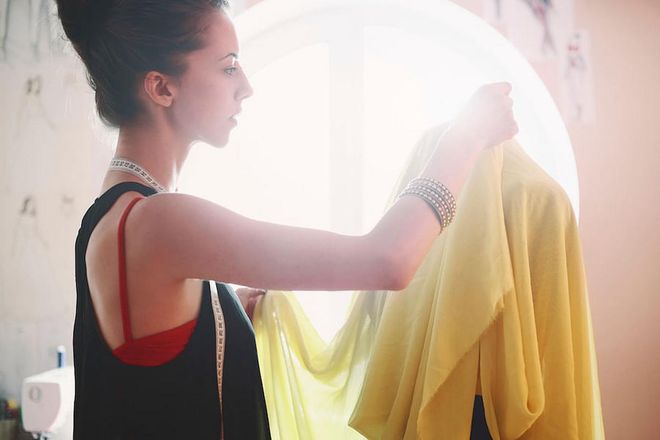BAZAAR Academy Masterclass: How To Use Data Analytics Effectively
CEO and founder of Omnilytics, Kendrick Wong, tells us how to make use of data to run a successful fashion business

Harper’s BAZAAR Singapore is proud to continue working with Chanel on nurturing the next generation of talent, our latest initiative being the BAZAAR Academy Masterclass series to equip students with the skills to tackle different facets of the business of fashion. Over the course of six weeks, experts and insiders come together to share their knowledge, insights and tips.
For our final session, CEO and founder of Omnilytics, Kendrick Wong, talks to Digital Director, Boon Tan, on how to make use of data to run a successful fashion business.
Related article: BAZAAR Academy Masterclass: How To Start Making Your First Dollar, According To SocietyA Founder, Pek Lay Peng

Kendrick Wong, founder and CEO of Omnilytics (Photo: Omnilytics)
There is no doubt now that data plays an essential part in everybody’s life. Take for example, Instagram.
For all the likes and views you get, those are numbers or data that help you understand what kind of content is popular among your followers and friends.
Related article: BAZAAR Academy Masterclass: How To Create A Brand Beyond Products With Founder Of Stolen, Elyn Wong
Likewise, for any fashion business wanting to improve sales and margins, data insight is a very useful tool to help you succeed in the future.
Omnilytics — a market intelligence platform that provides real-time data and competitor analysis for fashion retailers — helps brands make buying and stocking decisions in the most effective and efficient manner using data analytics. This effective use of data then increases the retailers’ sales margins and optimises assortments for revenue and profit.
Related article: BAZAAR Academy: Social Media Star & Entrepreneur Irene Kim On How To Stand Out From The Fashion Startup Crowd

Photo: Getty Images
Woman working in fashion design studio
So how does data come into place for someone who wants to build a successful business in fashion?
Kendrick highlighted that historically, data was mainly used in functions like merchandising, buying and marketing. But in today’s digital-driven market, Omnilytics has mapped out where data fits in pre-season preparations and in-season management.
In a trend-driven industry such as fashion where it’s a constant balance between supply and demand, internal trading data cannot paint the whole picture.
Related article: BAZAAR Academy Masterclass: How to Create Compelling Content By Yoyo Cao
He continues: “A lot of forecasting that happens in the industry, from trends to sales, is based on data silos which more often than not ends up being inaccurate. If the current systems work well, we wouldn’t see so many products being wasted or going on clearance sale. Data insight, combined with internal data, gives the brand a more comprehensive understanding what the customers like and buying, not just from you but also where they’re buying these products from.”
On how the creative process and data analytics can work seamlessly, Kendrick says: “At the end of the day, technology can never replace human creativity, especially in any activity that involves pure creation, but at the same time, the goal of every brand is to make products that people like and ultimately fulfil a certain gap in our lifestyle.”
“The data we share does not tell you what to design or how to discount; it only informs and validates your decisions. At the end of the day, the designers, buyers, merchandisers and marketers are still the pilots of the plane.”
How has the pandemic affected the way fashion retail operates? Kendrick says COVID-19 has greatly influenced not just how retailers operate, but also how people shop.
Related article: BAZAAR Academy Masterclass Series: How To Pitch And Present Yourself With Confidence With ONE FM 91.3 DJ Angelique Teo

Photo: Getty Images
Online shopping
“Many businesses considered e-comm as a supplement to physical retail but they’ve realised it is a necessity,” he continues. “We’ve seen many big names in the business topple recently and it’s because they refused to evolve with the consumer of today.”
“Today’s consumers are no longer locked in a seasonal mindset — buy now, wear now is key.”
For those who are still wondering why the next generation of fashion leaders should use analytics, Kendrick has this piece of advice: “Analytics has the power to improve every step of the fashion journey regardless of your role.”
Take for example, merchandising. Nothing is more important than knowing what your consumers want; you can promote and market using tactics that you know work to get an edge on the competition.
As for buying, using consumer data and information about trends will help future buyers source the best products to get the most return.
Last but not least, people often think analytics is not necessary when it comes to designing. On the contrary, rather than trying to work in a blackhole, partnering creativity with data about what’s moving in the market can help you catch and create new trends.
He adds: “Some of the benefits of this approach include avoiding steep discounts which cut into margins; building a brand that people love and trust; having a more sustainable approach (not creating more than you can sell) and finally, arming yourself with information about consumer and product trends as you move up in your career.”